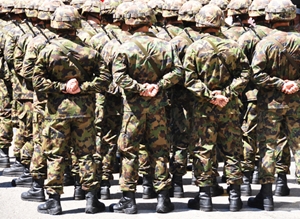Communities around the U.S. recognized June 22 as National Post-Traumatic Stress Disorder Day, but one of the most important observances was on the steps in front of the Capitol Building. Mental health advocates and veterans gathered to speak about the challenges associated with treating PTSD and traumatic brain injury in the military community, and while there are still obstacles to overcome, the Army is leading the charge with a multi-million dollar effort, according to Army News Service.
Collaborative effort
Although the Army is leading the way when it comes to studying PTSD and TBI, it is not alone. The branch is also taking part in a $60 million research study along with the National Football League, General Electric and Under Armour. The project comes is in addition to an executive order from the White House that diverted about $700 million to help the Department of Veterans Affairs work with other agencies to tackle the issue of PTSD and TBI. For Iraq veteran Brig. Gen. John M. Cho, who spoke at the Capitol over the weekend, such a broad approach is a good sign.
"The invisible wounds – post-traumatic stress disorder and traumatic brain injury – are just as damaging as the visible ones," he told the gathered crowd. "They impact the families as well as the soldiers." He added that such initiatives can help remove the stigma often attached to the conditions.
Far reaching impact
As Cho hinted, the effects of PTSD are often felt by more than just soldiers. Families can be touched by the condition, and that is especially true when it comes to the youngest members of the military community. According to the VA, there are several different ways children of parents with PTSD might respond. For one, they may echo symptoms similar to the ones present in their parent, but they may also exhibit behaviors ranging from problems at school to depression.
Although it remains to be seen whether the Army's collaborative effort pays off, it's certainly a step in the right direction. According to the American Psychological Association, an estimated 20 percent of veterans of Afghanistan and Iraq have symptoms of PTSD. That accounts for about 300,000 vets, and with the number of returning service members expected to grow in the coming years the need for attention is especially great.

